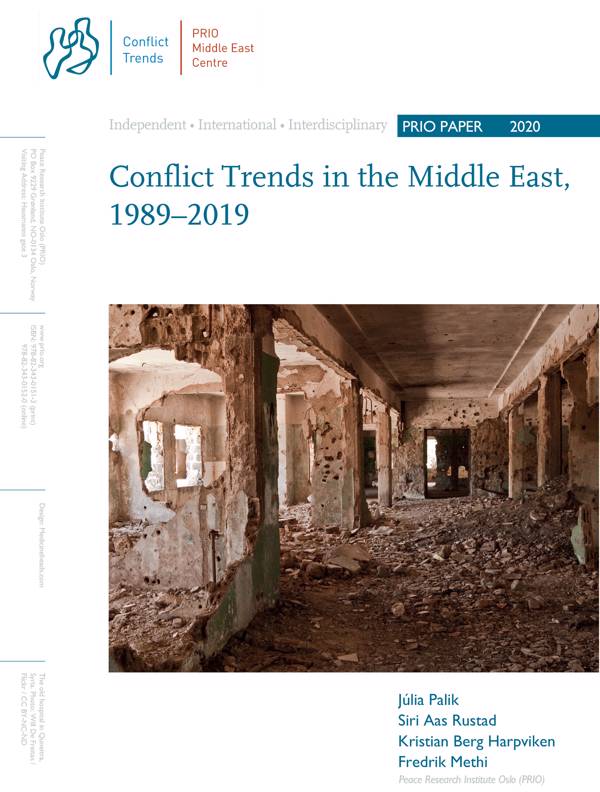Over the past decade, the bulk of the world’s deadliest conflicts have been in the Middle East. To examine this, this PRIO Paper takes a closer look at trends in conflicts in the Middle East between 1989 and 2019 and compares them to global trends, using data from the Uppsala Conflict Data Program (UCDP). In addition, the paper analyzes trends in conflict recurrence, ceasefires, and peace agreements during the same period.
In comparison with other regions, the Middle East has seen the largest relative increase in the number of state-based conflicts over the last six years. In 2019, the number of state-based conflicts decreased for the first time since 2007. Battle-related deaths are also declining, yet internationalized conflicts have skyrocketed. While non-state conflicts have declined since 2014, they are still at a considerably higher level than in the years before 2011. Although the Islamic State (IS) was allegedly defeated in Syria in 2019, the number of IS-related conflicts increased from 2018 to 2019 globally and remains high in the Middle East. Fatalities from one-sided violence increased in the Middle East from 2018 to 2019, mostly due to violence perpetrated by Syrian insurgents, IS, and Iran. The number of ceasefires in the region has increased, but peace agreements remain rare.











